Cats are natural climbers. In the wild or outdoors, they scale trees and perch on high surfaces to observe their surroundings, rest safely, or escape potential stressors. In modern indoor environments, cat shelves offer a way to satisfy this instinct while maximizing limited space—especially in apartments or small homes.
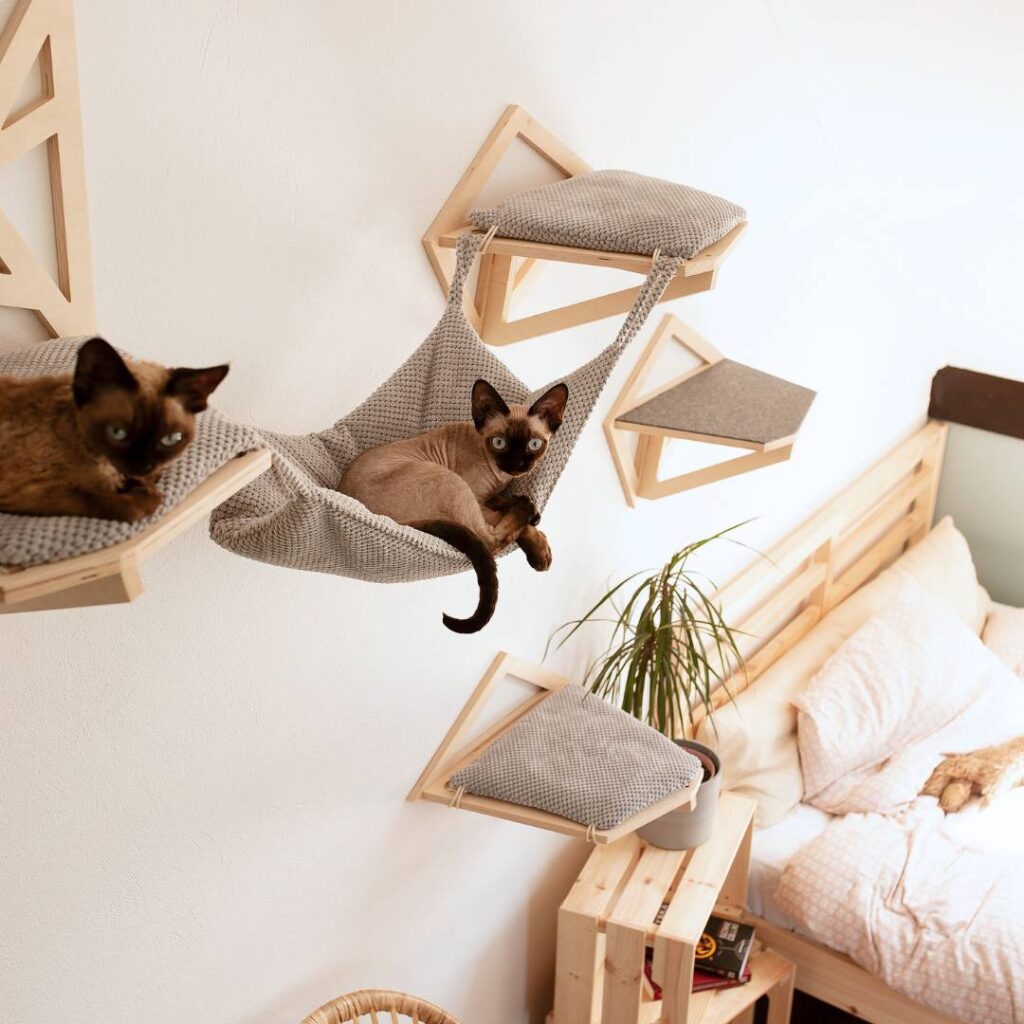
Whether you’re creating a wall-mounted play area, adding vertical access for older cats, or looking for Pinterest-worthy pet furniture, this guide explores over 20 cat shelf ideas. These designs range from minimal to multi-level, from store-bought to DIY, and are tailored for aesthetics, utility, and feline behavior.
Why Install Cat Shelves?
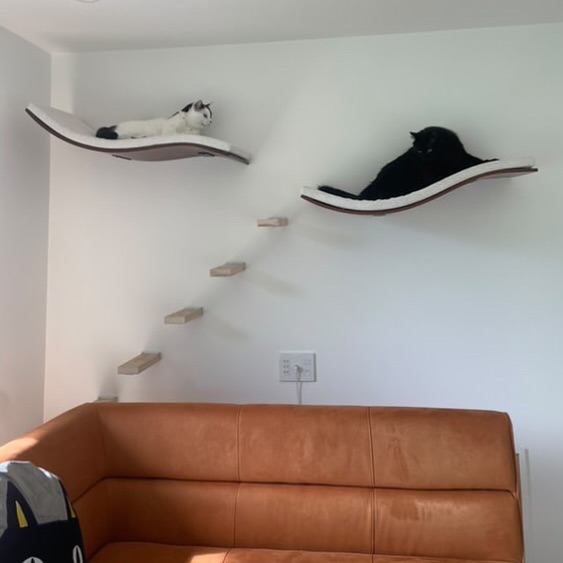
Cat shelves are more than decorative—they’re functional enrichment tools. By offering vertical space, shelves provide cats with exercise, entertainment, and territory that’s entirely their own. Benefits include:
- Increased activity without taking up floor space
- Reduced stress in multi-cat households
- Mental stimulation and a sense of security
- Furniture protection, since cats are less likely to scratch couches when they have engaging alternatives
Wall-Mounted Cat Shelf Ideas
Floating Wood Platforms
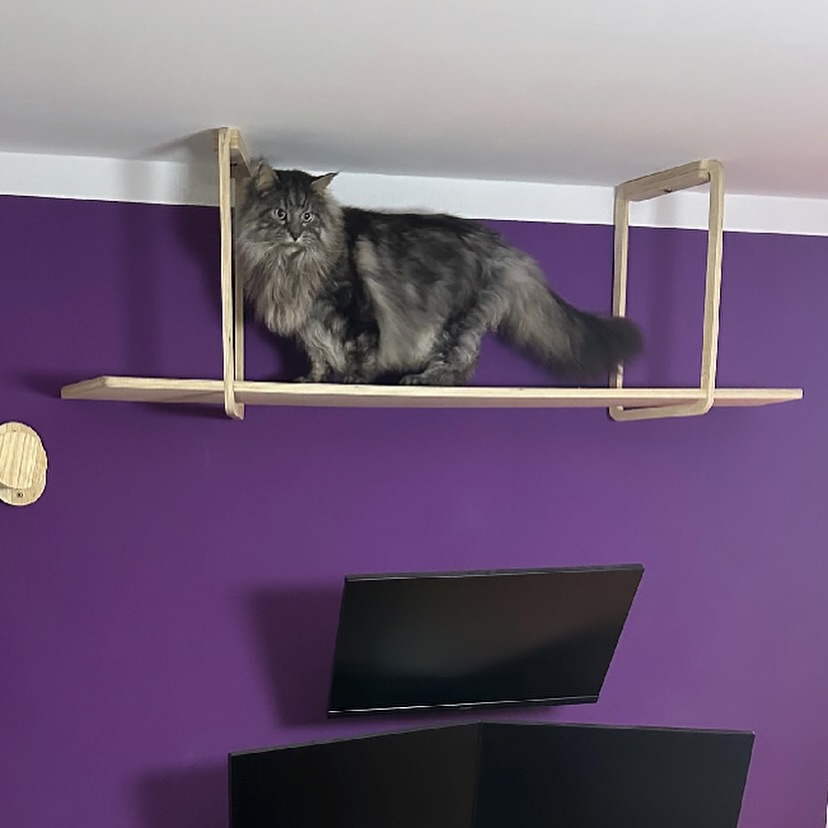
Minimalist and clean, these planks attach directly to the wall and blend with most home decor. Use natural or stained wood for warmth, or paint to match your color scheme.
Tiered Climbing Paths
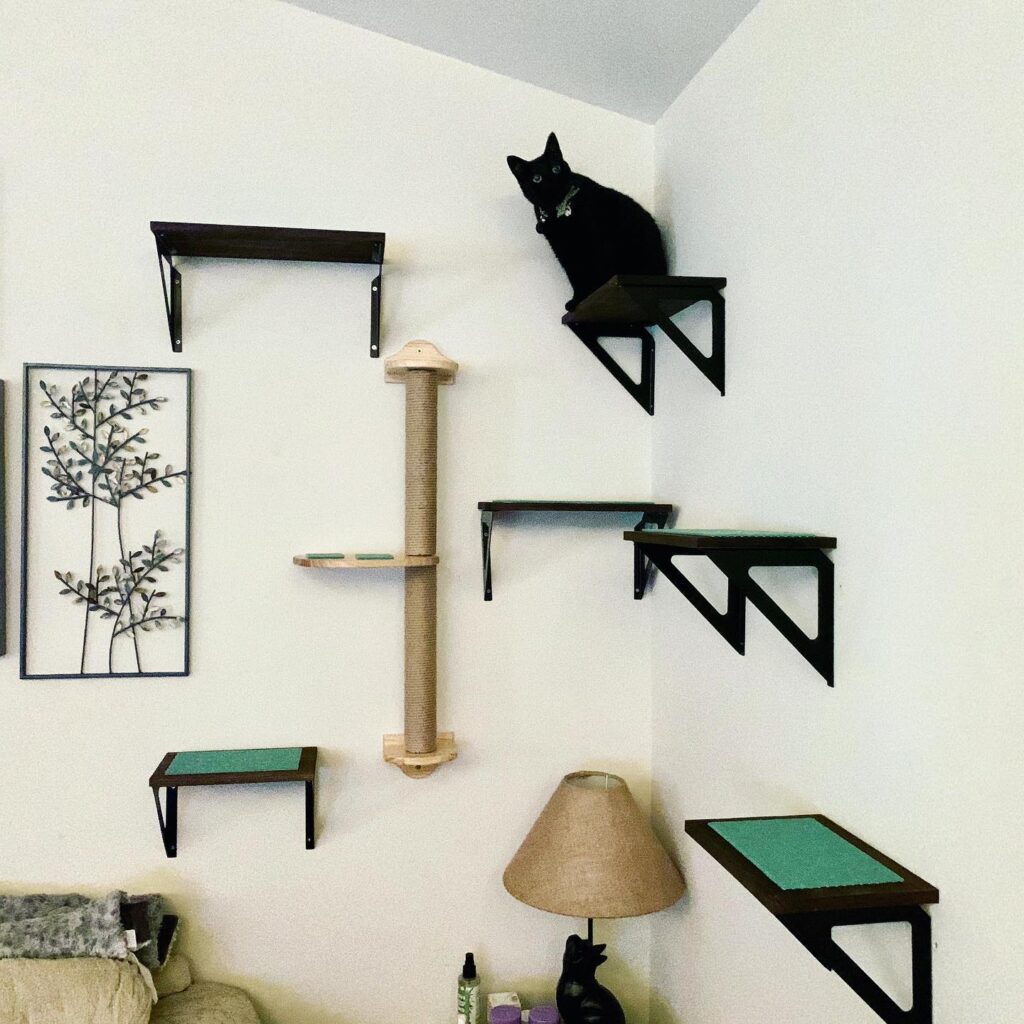
Install shelves in a staggered staircase pattern to allow cats to climb up and down easily. Ideal for reaching high perches or window views.
Cat Shelf with Built-In Scratching Pads

Combine shelving with sisal or carpet inlays for climbing and claw maintenance in one. Saves wall space and adds tactile variation.
Window-Mounted Shelves

Place directly under a window for sunbathing and birdwatching. Use wide, cushioned platforms to create a comfortable viewing area.
Corner Wall Shelves
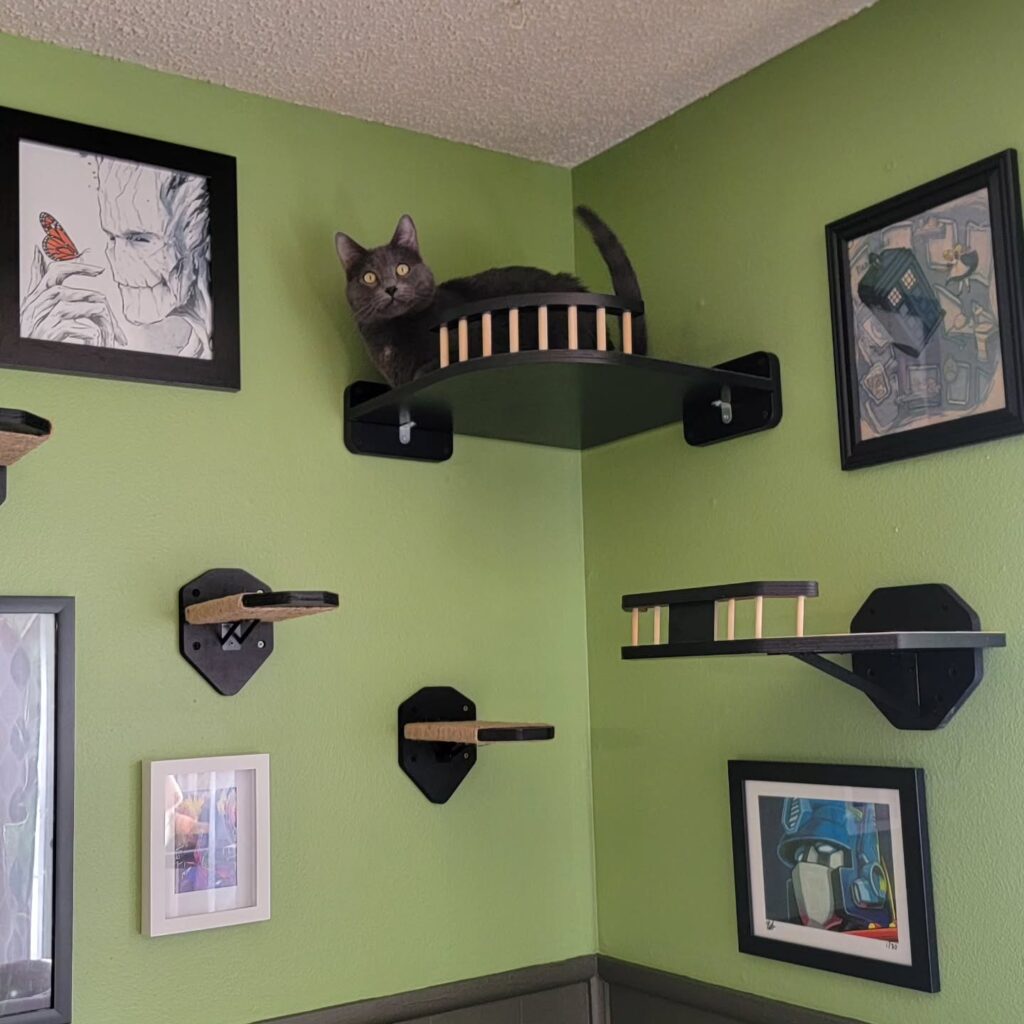
Utilize unused corner space by installing L-shaped shelves or wrapping platforms that allow circular climbing paths around a room.
Shelves with Guard Rails
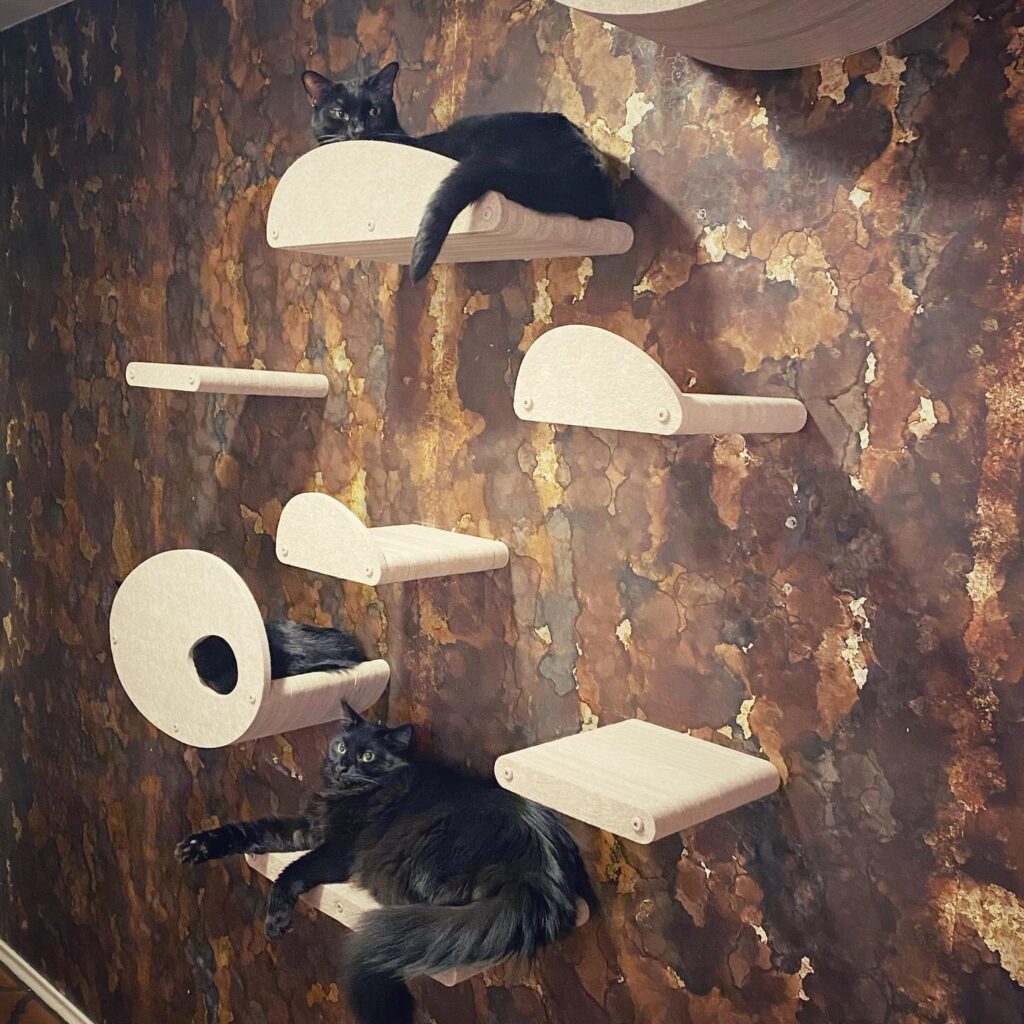
For senior cats or those with balance issues, shelves with a low lip or rope railing offer extra safety without sacrificing style.
Integrated and Thematic Cat Shelves
Cat Shelves That Match Your Furniture

Choose shelves that mirror the material or finish of your existing furniture (oak, walnut, matte black, etc.). This creates a seamless look across the room.
Geometric or Hexagon Designs
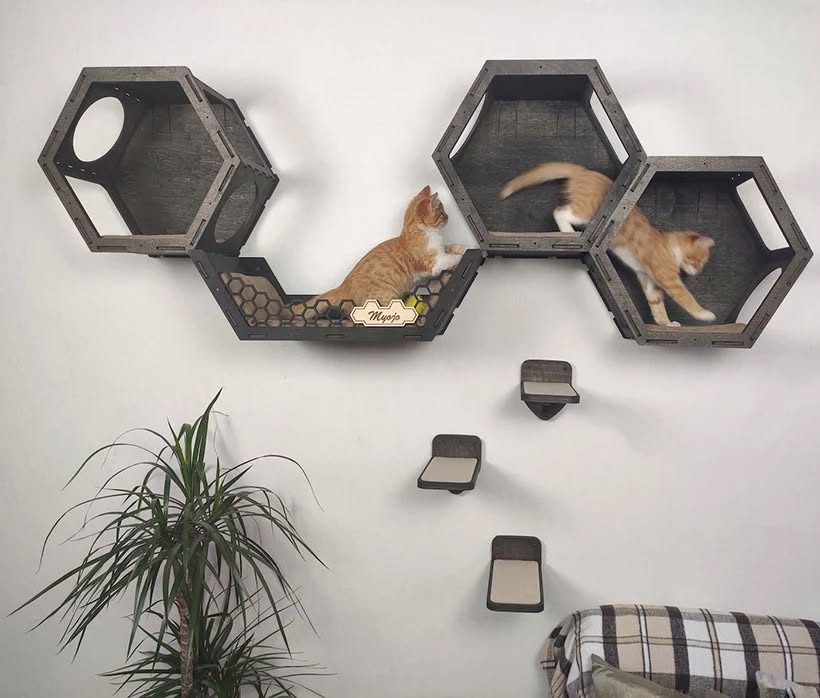
Honeycomb-style hexagonal shelves or triangle-based wall units offer both function and architectural appeal. These are highly shareable on Pinterest and Instagram.
Jungle Gym Layouts

For energetic cats, create elaborate, connected systems: platforms, bridges, and shelves that wrap around the entire room.
Hidden Cat Shelf Systems
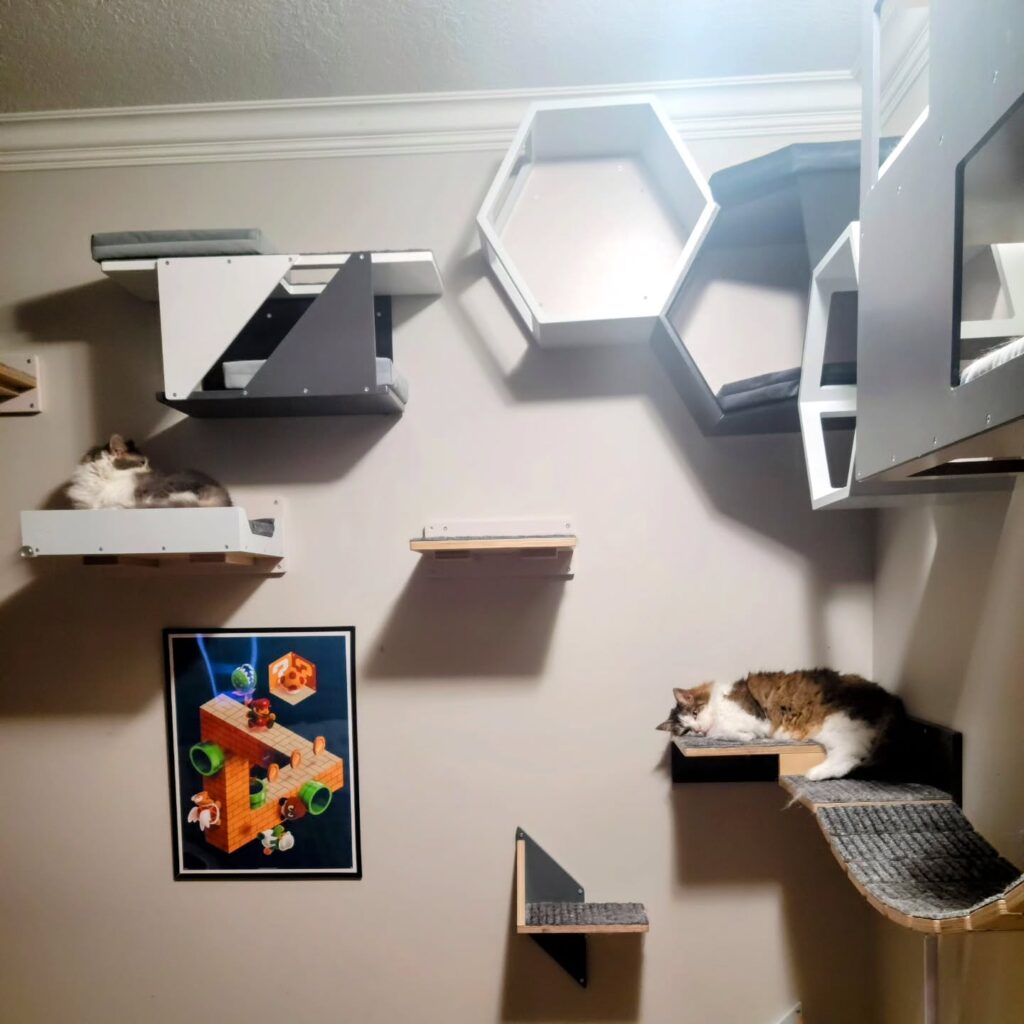
Install inside bookcases or above cabinetry—letting cats access vertical space without drawing attention to the design.
DIY Cat Shelf Ideas
IKEA Hack Shelves
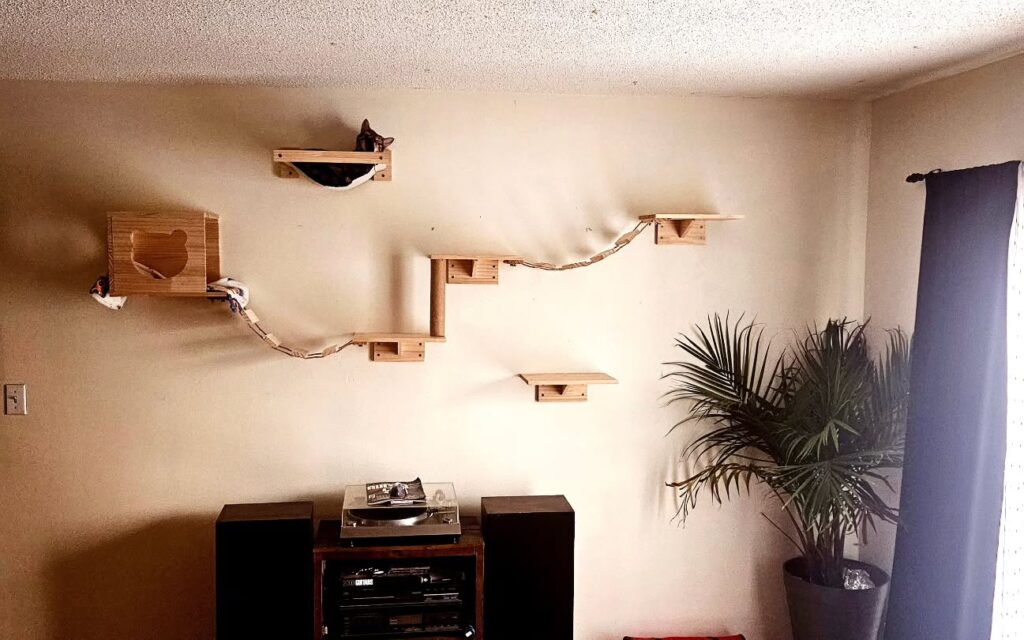
Use IKEA’s LACK shelves, spice racks, or wall-mounted units as a base. Add grip with felt, sisal, or carpet pieces.
Reclaimed Wood Planks
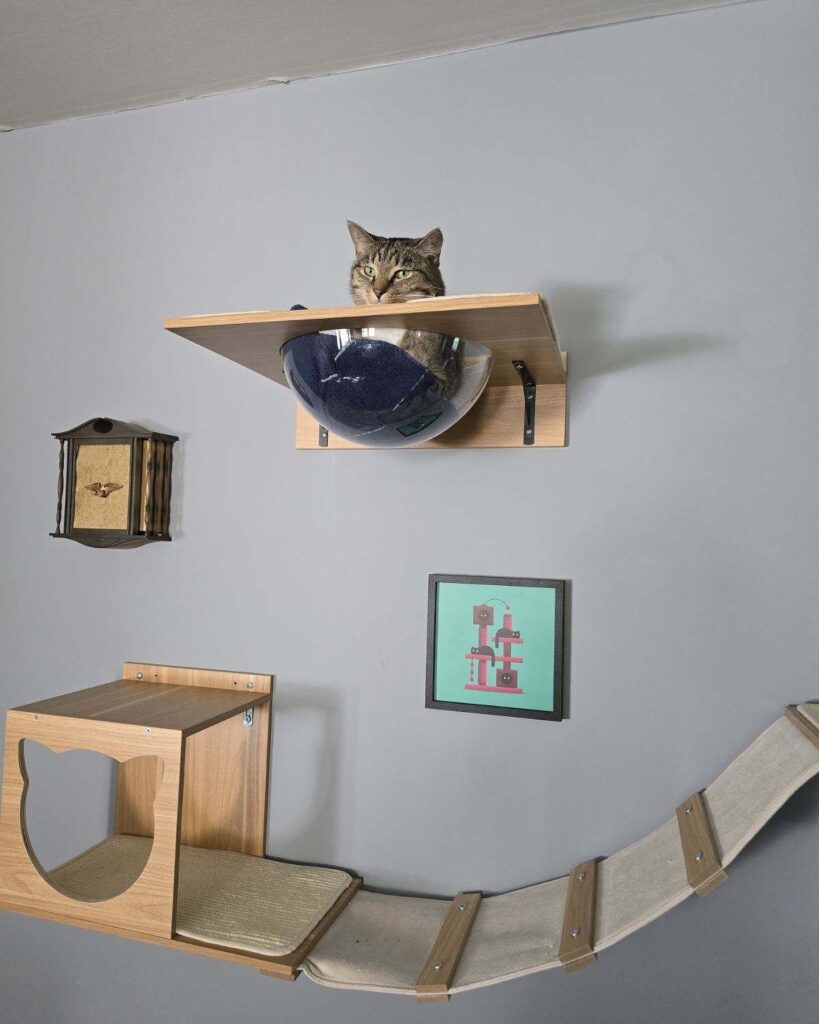
Rustic and sustainable—use sanded wood, attach brackets, and customize sizes based on your space. Great for farmhouse or natural interiors.
PVC and Fabric Brackets
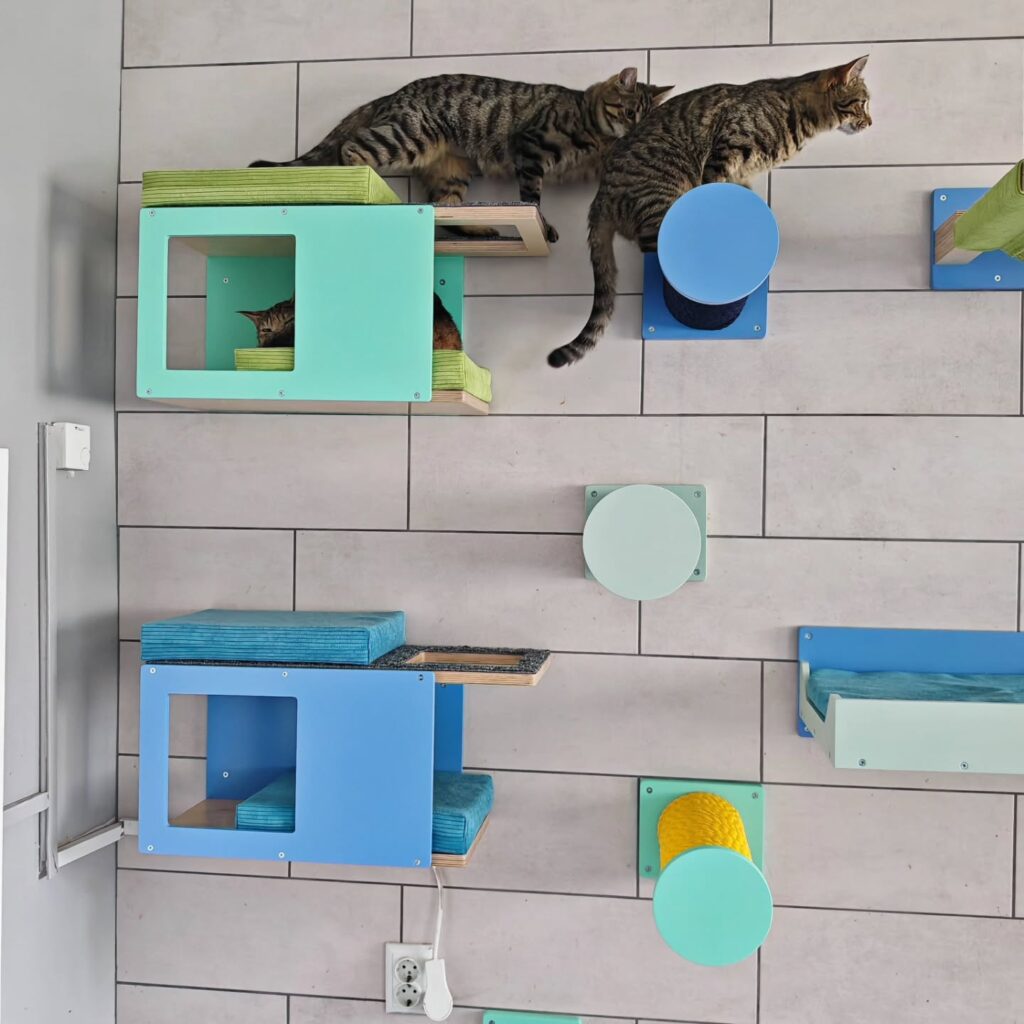
Build light, inexpensive shelves using PVC for structure and canvas or reinforced fabric for the base. Ideal for temporary or rental-friendly setups.
Old Drawer Shelves
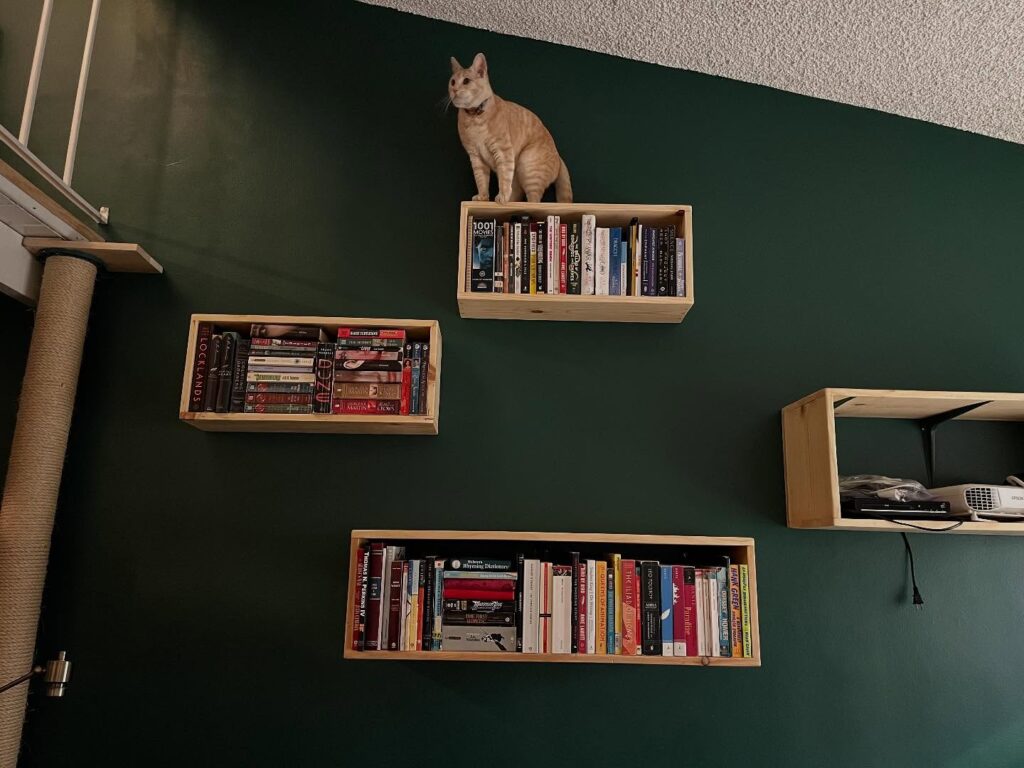
Repurpose unused drawers by attaching them to the wall as enclosed shelf boxes. Add a cushion or mat inside to make them comfy lounging spots.
Tips for Safe and Effective Cat Shelf Installation
Placement
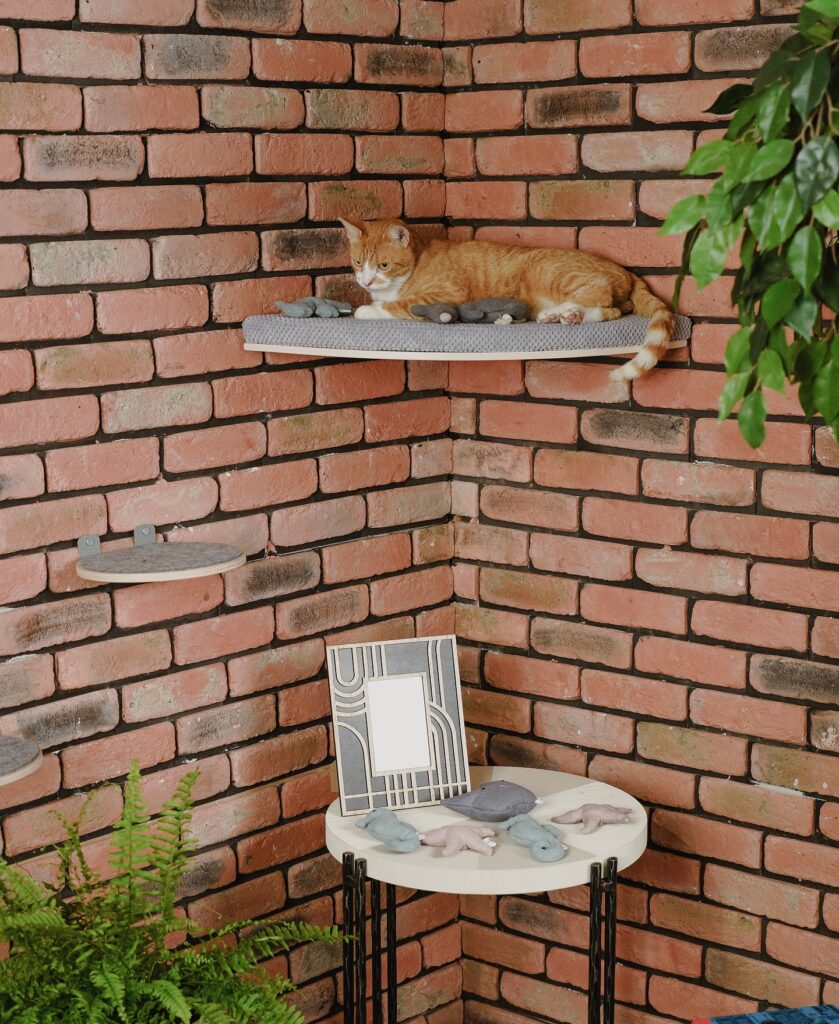
Cats prefer quiet, elevated spots. Position shelves near windows, above furniture, or in cozy corners. Avoid placing shelves directly above fragile items.
Spacing

Shelves should be 10–18 inches apart vertically to allow easy climbing. For senior or disabled cats, reduce height and ensure gradual steps.
Anchoring
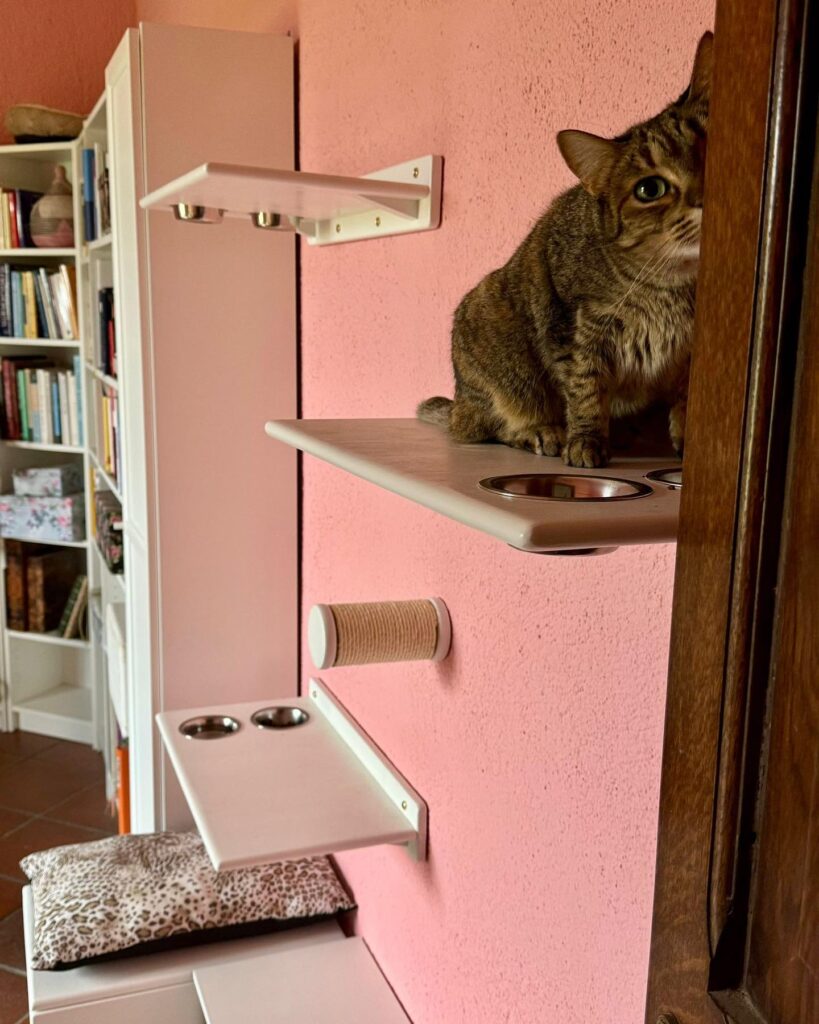
Use heavy-duty wall anchors and brackets rated for your cat’s weight. A shelf should hold at least 1.5x your cat’s weight for safety.
Surface Texture

Avoid slippery finishes. Add felt, sisal, or low-pile carpet to increase traction and comfort.
Accessibility
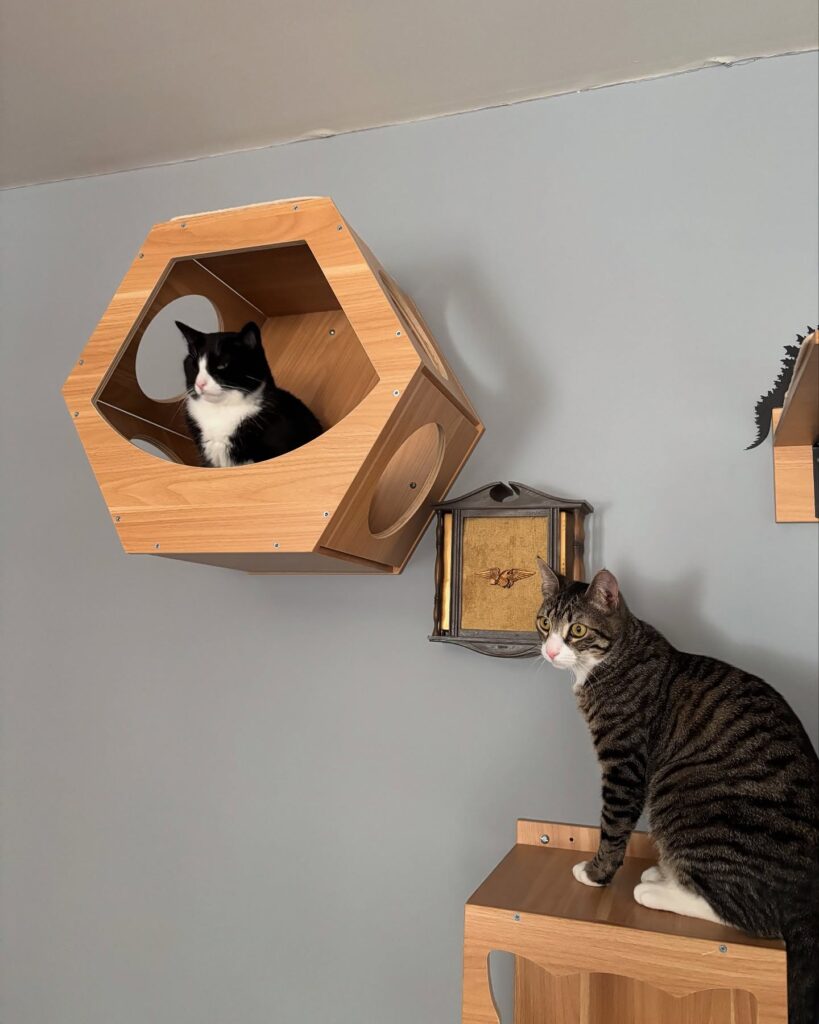
Ensure a route up and down. Cats dislike being trapped, so include multiple exits or landing areas, especially for higher shelves.
Where Cat Shelves Work Best
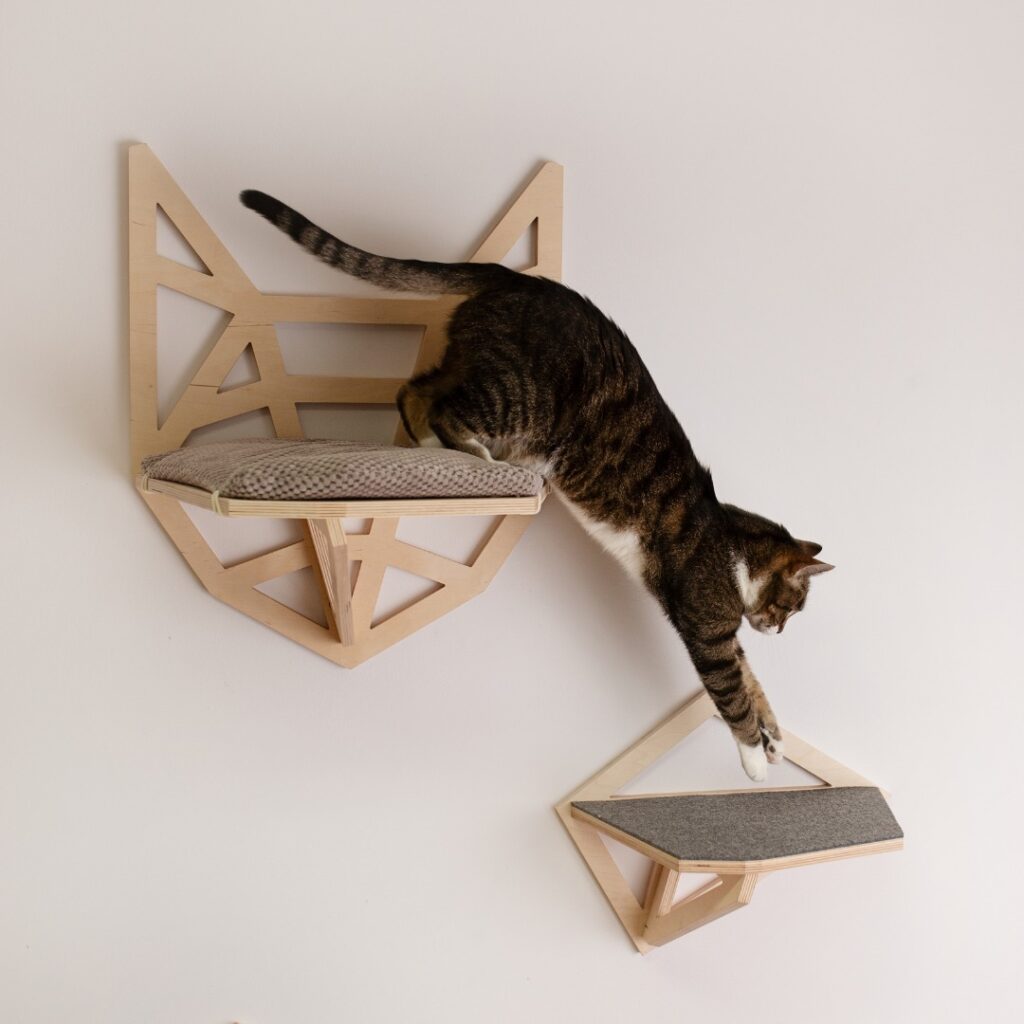
- Above couches – easy access and dual-function wall use
- Near windows – for natural light and outdoor views
- In home offices – gives cats a place to rest without sitting on keyboards
- In hallways – turn long corridors into climbing courses
- In multi-cat rooms – offer layered vertical zones to reduce tension
Style Options to Match Your Home
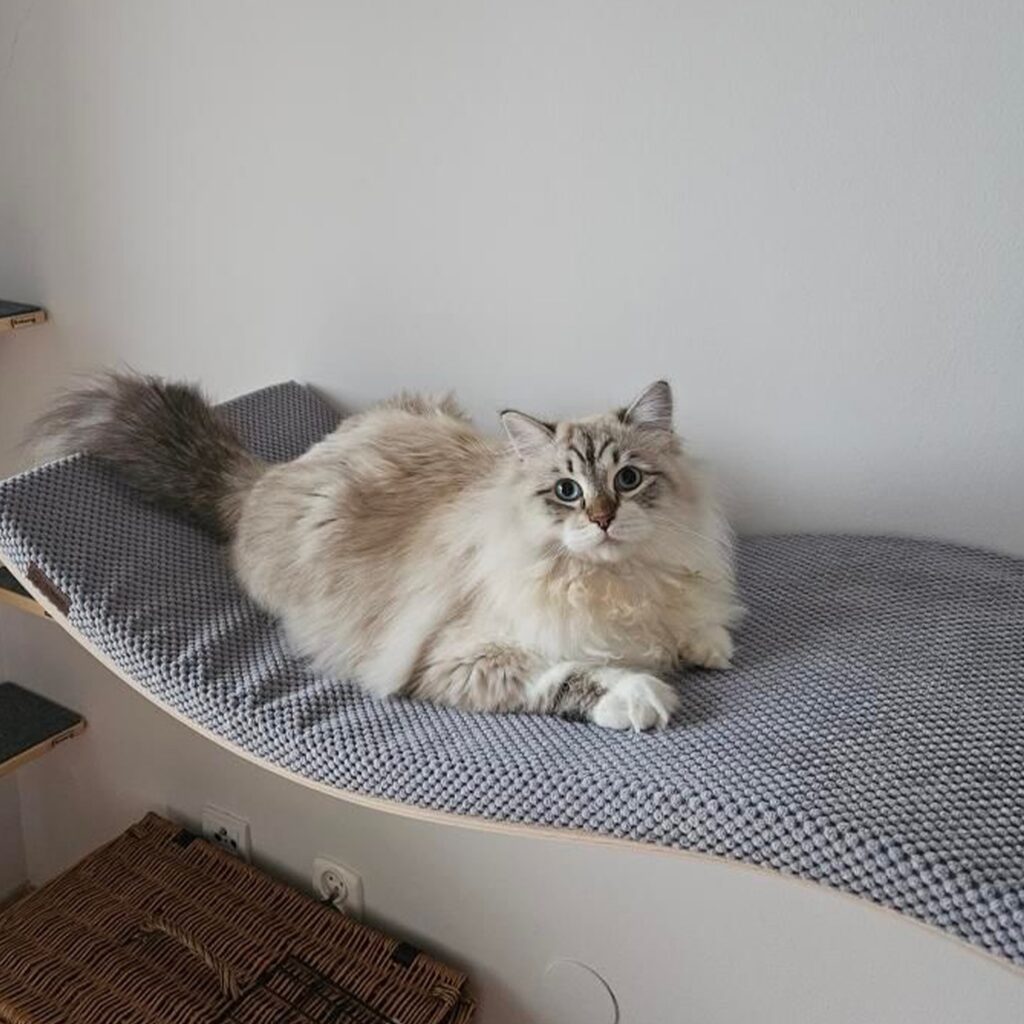
Minimalist
Simple shapes, hidden brackets, and neutral colors—perfect for Scandinavian or modern homes.
Rustic
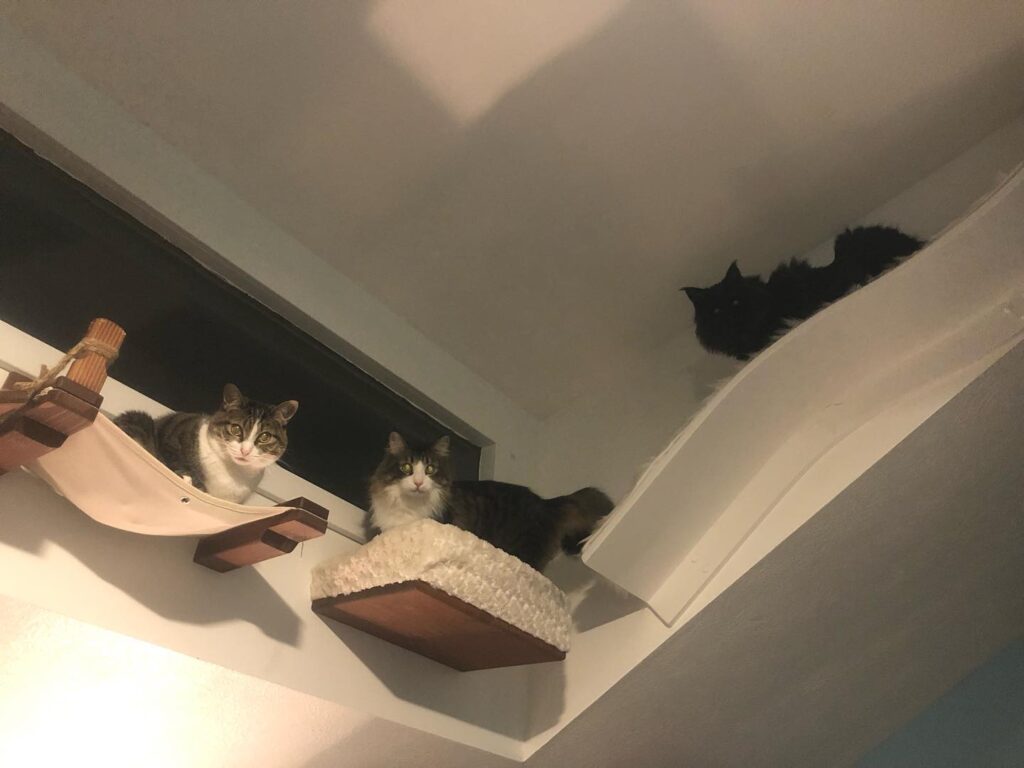
Distressed wood, visible grain, and cast iron or matte black brackets. Complements farmhouse, industrial, or vintage spaces.
Contemporary
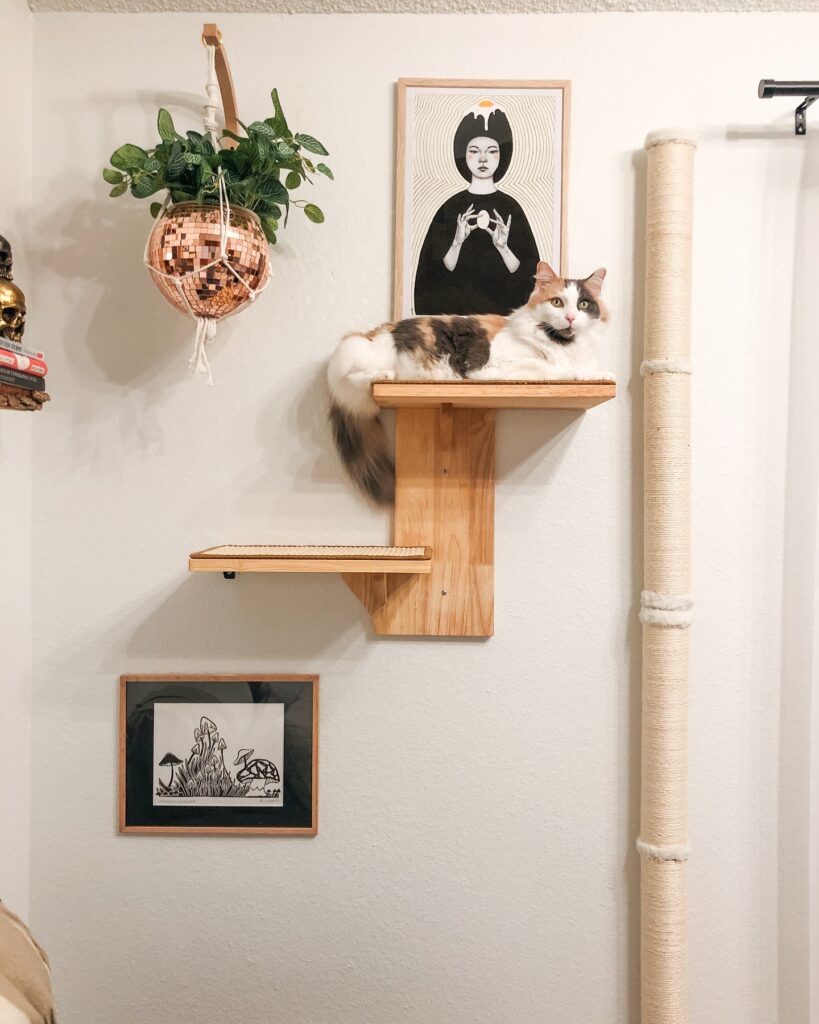
Sleek acrylic shelves, floating glass units, or soft upholstered platforms. Ideal for design-conscious interiors.
Boho/Natural
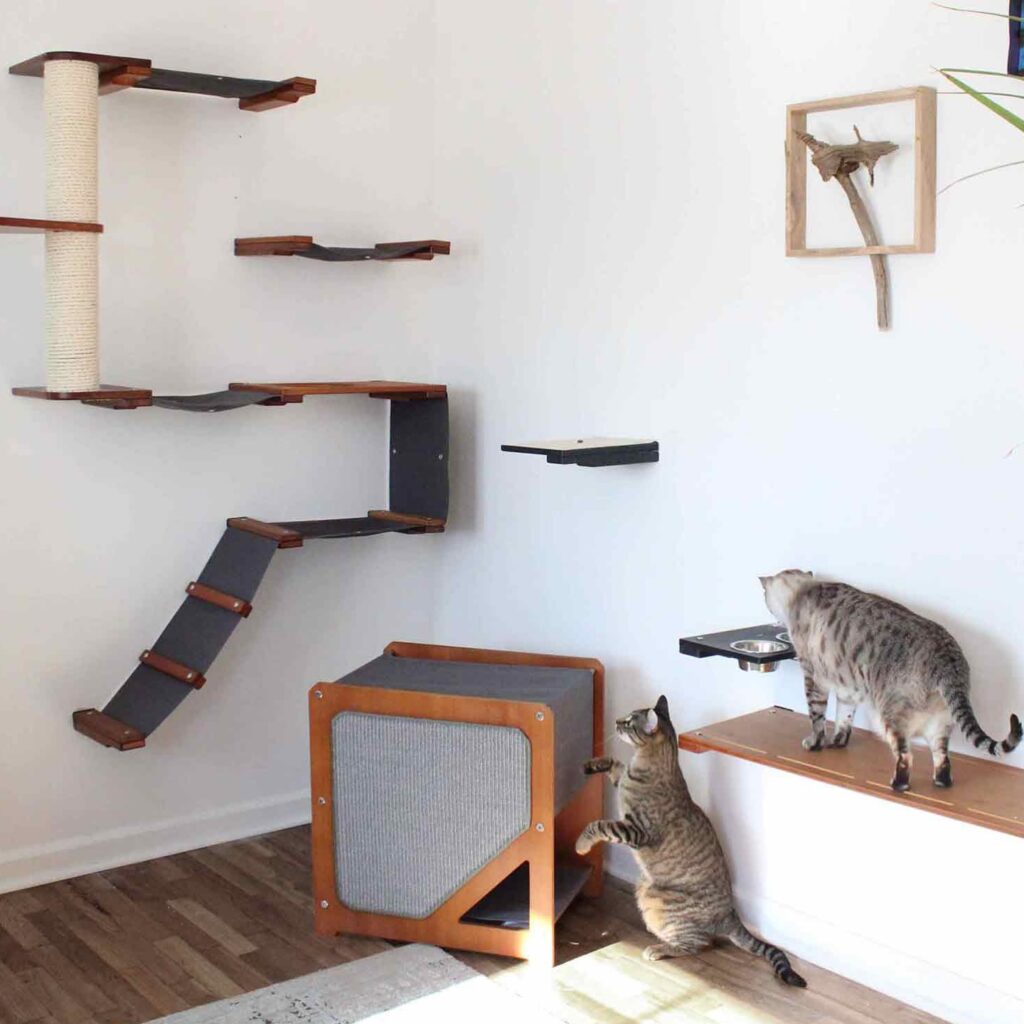
Wicker, bamboo, rattan, and raw-edge wood. Pair with hanging plants or soft textiles for a cozy vibe.
Final Thoughts
Cat shelves combine functionality, style, and feline instinct into one practical solution. Whether you’re installing a single window perch or designing a wall-to-wall climbing structure, shelves help keep your cat stimulated, confident, and physically active.
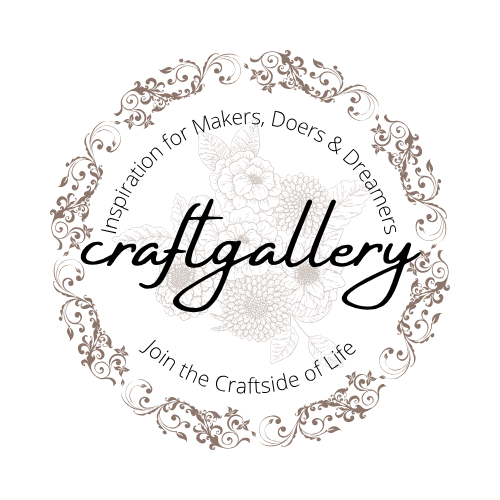

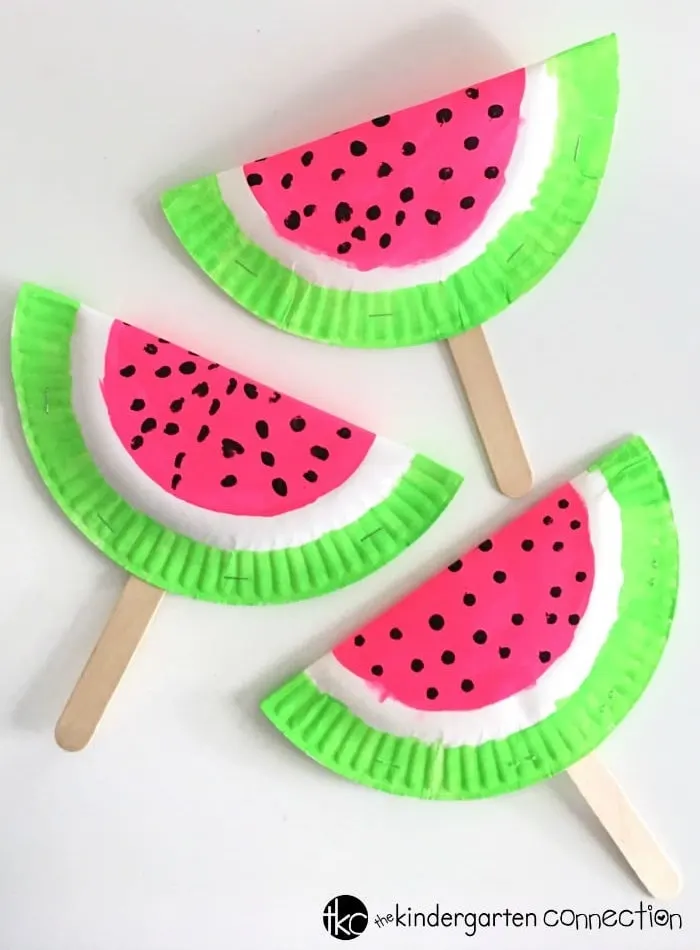
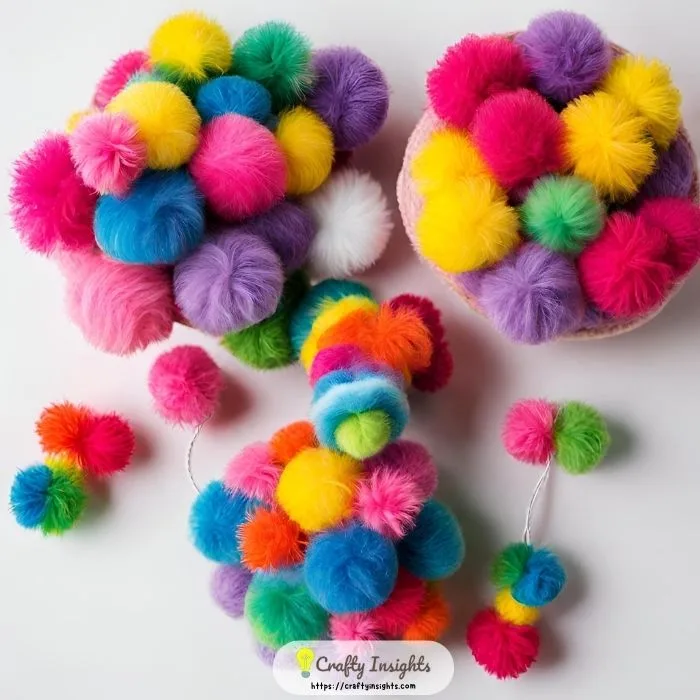
Leave a Reply